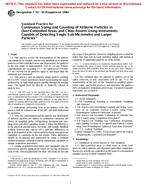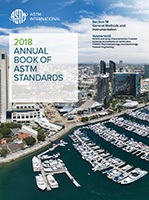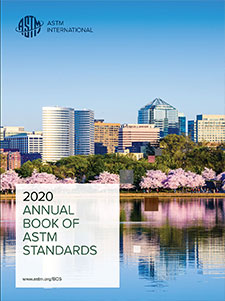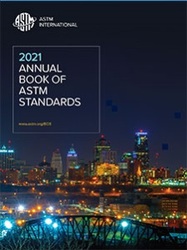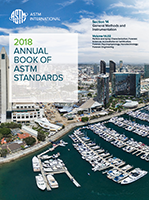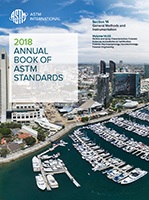Description
1.1 This practice covers the determination of the particle concentration, by number, and the size distribution of airborne particles in dust-controlled areas and clean rooms, for particles in the size range of approximately 0.01 to 5.0 [mu]m. Particle concentrations not exceeding 3.5 X 106 particles/m3 (100 000/ft3) are covered for all particles equal to and larger than the minimum size measured.
1.2 This practice uses an airborne single particle counting device (SPC) whose operation is based on measuring the signal produced by an individual particle passing through the sensing zone. The signal must be directly or indirectly related to particle size.
Note 1-The SPC type is not specified here. The SPC can be a conventional optical particle counter (OPC), an aerodynamic particle sizer, a condensation nucleus counter (CNC) operating in conjunction with a diffusion battery or differential mobility analyzer, or any other device capable of counting and sizing single particles in the size range of concern and of sampling in a cleanroom environment.
1.3 Individuals performing tests in accordance with this practice shall be trained in use of the SPC and shall understand its operation.
1.4 Since the concentration and the particle size distribution of airborne particles are subject to continuous variations, the choice of sampling probe configuration, locations and sampling times will affect sampling results. Further, the differences in the physical measurement, electronic and sample handling systems between the various SPCs and the differences in physical properties of the various particles being measured can contribute to variations in the test results. These differences should be recognized and minimized by using a standard method of primary calibration and by minimizing variability of sample acquisition procedures.
1.5 Sample acquisition procedures and equipment may be selected for specific applications based on varying cleanroom class levels. Firm requirements for these selections are beyond the scope of this practice; however, sampling practices shall be stated that take into account potential spatial and statistical variations of suspended particles in clean rooms.
Note 2-General references to cleanroom classifications follow Federal Standard 209, latest revision. Where airborne particles are to be characterized in dust-controlled areas that do not meet these classifications, the latest revision of the pertinent specification for these areas shall be used.
1.6 This standard does not purport to address all of the safety concerns, if any, associated with its use. It is the responsibility of the user of this standard to establish appropriate safety and health practices and determine the applicability of regulatory limitations prior to use. For specific hazards statements, see Section 8.
Product Details
- Published:
- 01/01/1996
- Number of Pages:
- 6
- File Size:
- 1 file , 33 KB

